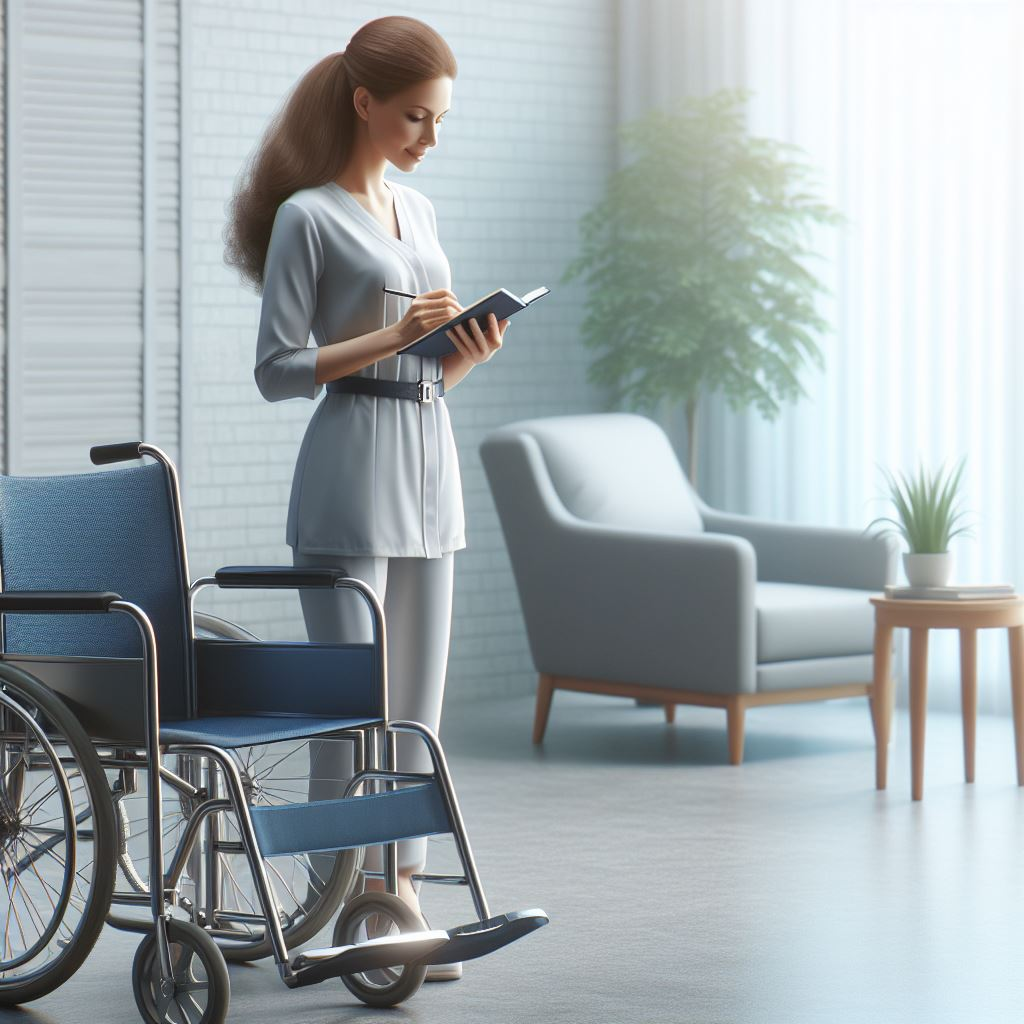10 Working with Supports
To ensure a truly inclusive and equitable learning environment, it is crucial for instructors to understand that students with different needs require different levels of support. For instance, some students may require extra time to complete assignments, while others may require additional assistance like a notetaker or an ASL interpreter. It is the responsibility of the instructor to be aware of these requirements and provide the necessary accommodations to ensure that all students have equal opportunities to succeed.
Furthermore, instructors should keep in mind that creating an accessible classroom environment is not only limited to physical accommodations. They should also be mindful of the language and tone they use in the classroom, avoiding any language or behavior that could marginalize or discriminate against any student.
It is essential to approach accessibility as an ongoing process that requires continuous evaluation and improvement. As such, instructors should be open to feedback from their students and regularly seek out resources and training on accessibility best practices. By actively working to create an inclusive and accessible learning environment, educators can help promote a culture of diversity, equity, and inclusion in their classroom.
Working with Notetakers:

In some instances, students may require the assistance of peer notetakers or computerized notetaking software to aid in their learning process. As an instructor, it is important to be aware of the different notetaking support options available and how to best facilitate their usage in your classroom. Here are the tips to follow when working with notetakers:
- Sharing course materials in advance, such as PowerPoint presentations, handouts, and online materials, can help students and notetakers prepare for class and ensure they capture all relevant information during in-class time.
- Speaking clearly, projecting your voice, and speaking at a reasonable pace are important to assist notetakers in capturing all important information accurately.
- Being prepared for potential interruptions and clarifications from notetakers can help ensure that they are accurately transcribing the information presented in class.
- Instructors should be willing to meet with students and notetakers for consultation and planning when necessary to provide the necessary support for success in coursework.
- It’s important to keep in mind that notetaking is a skill that requires practice, and some notetakers may be more experienced than others. Instructors should be aware of this and provide additional support as needed.
- Students who require notetaking support may also have additional needs related to their disability, such as needing breaks or accommodations related to fatigue or pain. Instructors should be aware of these needs and provide necessary accommodations.
- Instructors should also be aware of the privacy concerns related to notetaking. Notetakers should be instructed to maintain the confidentiality of the student’s information and notes, and instructors should take steps to ensure that the notes are secure and accessible only to the student who requires them.
- Finally, instructors should seek feedback from both students and notetakers to improve the notetaking support provided. This can help identify any areas for improvement and ensure that the support provided is effective in meeting the needs of the student.
Working with Interpreters:

Some students may require the assistance of an interpreter to fully participate in class. As an instructor, there are several things you can do to ensure that these students are able to fully access and engage in the learning experience:
- Providing materials such as PowerPoint slides, handouts, and relevant course documents ahead of time can help students and interpreters better prepare for class and have a greater understanding of the material that will be covered.
- During in-person classes, make sure that you and the interpreter are positioned where the student can see both of you. Check with the student and interpreter to ensure that they have a clear line of sight. In online classes, make sure that the video and screen sharing options are adequate and accessible for the student and interpreter.
- Be mindful of any movements that could block the student’s view of the interpreter, and avoid making any distracting movements during class that could be a barrier to effective communication.
- Speak in a clear voice with a reasonable pace, and address the student directly rather than speaking to the interpreter. Remember that you are communicating with the student, and the interpreter is simply there to facilitate that communication.
- When someone in the class asks a question or makes a comment, make sure to repeat it so that the interpreter can accurately convey the information to the student. This also ensures that all students in the class have access to the information and dialogue being shared.
- Encouraging only one person to speak at a time can make it easier for the interpreter to convey the information to the student, and also ensures that everyone in the class has a chance to be heard.
- Interpreters may need to interrupt occasionally to clarify information or ask questions. Be prepared to accommodate these interruptions and work with the interpreter to ensure that the student is able to fully understand and engage with the class material.
- If needed, be open to meeting with students and interpreters for consultation and planning. This can help ensure that the student is receiving the support they need and that any issues or concerns are addressed in a timely and effective manner.re are several things you can do to ensure that these students are able to fully access and engage in the learning experience.
Working with Peer Tutors:

Peer tutors are often used to help students who may be struggling with a particular subject or assignment. These tutors can provide additional support and help students develop skills to improve their academic performance. It is necessary to work with peer tutors because they can provide valuable feedback and guidance to students while encouraging them to take an active role in their own learning. Here are the tips to follow when working with peer tutors:
- Set clear expectations for the tutoring relationship, including goals and communication preferences.
- Discuss and establish boundaries and schedules for tutoring sessions.
- Provide feedback and guidance to the tutor to ensure they are supporting the student effectively.
- Encourage the student to take an active role in the tutoring process.
- Regularly check in with the student and tutor to assess progress and make adjustments as needed.
Working with Personal Care Assistants:
Some students may require personal care assistance during class, such as help with mobility, toileting, or other personal needs. It is important to work with personal care assistants to ensure that the student is able to fully participate in class and receive the support they need. By working with the student and their care team to establish clear expectations and routines for personal care assistance during class, and planning ahead for any necessary accommodations or adjustments, educators can help create an inclusive and supportive learning environment. Additionally, it is essential to respect the student’s privacy and dignity when providing personal care assistance. Here are the tips to follow when working with personal care assistants:
- Work with the student and their care team to establish clear expectations and routines for personal care assistance during class.
- Ensure that the personal care assistant has received any necessary training or information about the class and the student’s needs.
- Respect the student’s privacy and dignity when providing personal care assistance.
- Plan ahead for any necessary accommodations or adjustments, such as accessible seating or breaks for personal care.
- Regularly check in with the student and personal care assistant to assess needs and make adjustments as needed.
Working with Accommodation Coordinators:

Accommodation coordinators work with students to determine what accommodations are necessary to ensure their full participation in class. It is important to work with accommodation coordinators to ensure that all necessary accommodations are in place for students. By providing necessary information about the class structure, format, and requirements to the accommodation coordinator, and maintaining open communication to troubleshoot any issues or concerns, educators can help ensure that students have the support they need to succeed. Encouraging students to provide feedback and suggestions to the accommodation coordinator can also help to improve the accommodation process over time. Here are the tips to follow when working with accommodation coordinators:
- Maintain open communication with the accommodation coordinator to ensure that all necessary accommodations are in place for students.
- Provide necessary information about the class structure, format, and requirements to the accommodation coordinator.
- Work collaboratively with the accommodation coordinator to troubleshoot any issues or concerns that arise.
- Encourage the student to provide feedback and suggestions to the accommodation coordinator for ongoing improvement.
- Regularly check in with the accommodation coordinator and student to assess progress and make adjustments as needed.
Working with Assistive Technology Specialists:

Assistive technology specialists help students access technology that can assist with their learning, such as screen readers or speech recognition software. It is necessary to work with assistive technology specialists to ensure that students have access to the tools and resources they need to succeed in class. By providing necessary information about the class structure and requirements to the assistive technology specialist, and working collaboratively to troubleshoot any issues or concerns, educators can help ensure that students are able to fully participate in class using the appropriate technology. Providing necessary training or information to the student about the assistive technology being used is also important to ensure effective use of the technology. Regularly checking in with the student and assistive technology specialist to assess progress and make adjustments as needed can help ensure that the technology is working effectively. Here are the tips to follow when working with assistive technology specialists:
- Provide necessary information about the class structure and requirements to the assistive technology specialist.
- Ensure that any necessary software or hardware is available and compatible with the class format.
- Work collaboratively with the assistive technology specialist to troubleshoot any issues or concerns that arise.
- Provide necessary training or information to the student about the assistive technology being used.
- Regularly check in with the student and assistive technology specialist to assess progress and make adjustments as needed.

